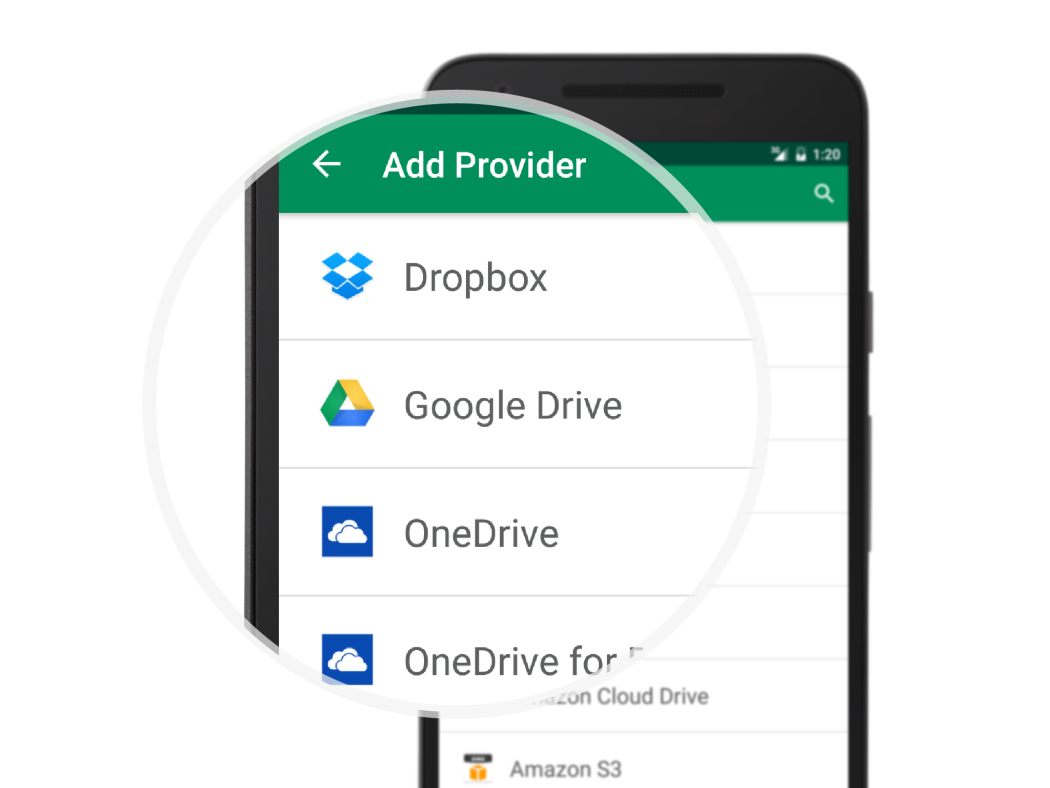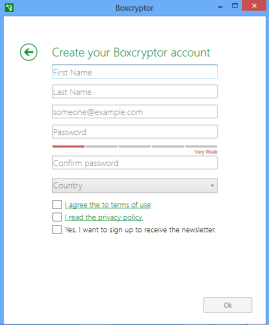Boxcryptor will immediately trigger a download via Dropbox Smart Sync and waits until it finished. After the download finished, the file open process will continue. If the download takes more than 3 seconds, Boxcryptor will abort the file open operation in order to preserve the responsibility of the Boxcryptor.

Cloudfoggerencrypts your files and documents to ensure more security and privacy especially on the cloud. It’s free for non-commercial use.
- Boxcryptor integrates seamlessly with Dropbox, allowing you to benefit from all of Dropbox’s features whilst adding additional security. With Boxcryptor, you can continue to collaborate with your team, share files with others and access your data on all of your devices. Perfect for teams.
- Thankfully, Boxcryptor allows offline authentication. You can create a key export that can be used to decrypt your files without connecting to Boxcryptor’s servers. Even if the service were to shut down, your key export would still work. With that out of the way, it’s time to get into the dirt.
- Boxcryptor integreert naadloos met Dropbox, zodat je niet alleen profiteert van alle functies van Dropbox maar ook extra beveiliging toevoegt. Met Boxcryptor kun je net als voorheen samenwerken met je team, bestanden delen met anderen en heb je nog steeds toegang tot.
The Cloudfogger app encrypts stuffs on your local device before uploading to cloud. It integrates with cloud storage providers like Dropbox, Google Drive and OneDrive. To use Cloudfogger, you need their app. Download the software from this official link. Cloudfogger client app is available for Windows PC, Mac, iOS and Android devices. For now, the service has no paid version. The company says, they will introduce premium plan(s) in future.
Sign-Up
After downloading Cloudfogger, install it and open the initial setup wizard. It lets you to register a new online account, create local offline account and sign in to existing Cloudfogger account.
An online account will enable you use your Cloudfogger account on multipledevices. It will require your name, email address and a new password.
While creating an online account on Cloudfogger, the app asks whether you want the password recovery option turned on. If you check the box, password recovery option will be enabled. Should you ever forget your Cloudfogger password, you will be able to recover the account. On the other hand, if you don’t enable password recovery option, you would not be able to gain access to your Cloudfogger account, and therefore your encrypted files could not be decrypted. As a result, losing the password will cause you losing your encrypted files.
Another similar tool ‘Boxcryptor’ does not offer password recovery option. That requires you to remember or manage your password by yourself.
Like Boxcryptor, Cloudfogger also allows opening local encryption account. It is an offline account which can be used from a single computer only.
You cannot use these offline accounts on mobile devices. File sharing is also not possible from such local accounts. You can only use this type of account to encrypt your files locally.
Starting with Cloudfogger
Once the sign-up completed, you can login to your Cloudfogger account.
After the sign in, you will be shown an empty space what should be filled with folder list later. Click on ‘Protect another folder’ button and select any folder from your computer.
You can select your Dropbox, OneDrive, Google Drive and other cloud services’ home folders so that all of the contents inside them will get encrypted automatically. The app currently allows up to 5 folders to add in its encryption list. The subfolders inside the main listed folders are not counted against this quota.
At the next step, Cloudfogger asks whether you want to share files with other people. There is a box to put the receiver email address. If the address is already associated with a Cloudfogger account, then the user will be given file access. If the email is not attached with Cloudfogger, its user will get an invitation to join Cloudfogger and see what’s there. You don’t need to share the decryption key with the other users. Just permit them via their CLoudfogger email address and they will be able to access the shared content. This process is managed by Cloudfogger server side system.
After configuring the sharing option, Cloudfogger is ready to use. There is a note for the user.
Cloudfogger Dashboard
After finishing the above step, a dashboard is shown with encryption status and settings options.
Here you will see warnings and the overview of the app’s function. Click on the option you want to deal with.

The first message is about the Cloudfogger app itself. It tells you whether the service is ready or not. Just under the first message, you can see the status of your file encryption service. If you have defined no folder to be encrypted, then it will show a notification regarding that. The third note is about your shared files. The all three messages appear on this initial window depict an inclusive scenario of your Cloudfogger status.
If you want to add new folders to encrypt their files, first double click the Cloudfogger system tray icon. It will bring the status & settings window. Click the cloud icon at the right side menu list.
Your current added folders and services will appear as a list. To add a new folder or cloud service, just click ‘Protect another folder’ button on the bottom. Now select any folder you want to add in your encryption list. The folder and its files will be automatically encrypted by Cloudfogger. The third option of the status & settings window lets share files with other users. The sharing procedure is already described above.
Click the gear icon to find Cloudfogger settings. It provides a few options. From here, you can decide whether the app starts with your computer. It also includes password remembering option, log file path, clearing the cache and opening keyfile.
The account settings option comes with profile information (name & password) change.
Encryption and Decryption with Cloudfogger
Unlike Boxcryptor, Cloudfogger doesn’t come with its own pre-loaded home folder or virtual drive. Once you add a folder in its encryption list, the folder will be encrypted automatically. The encrypted files will get special Cloudfogger icon (marked in the below screenshot).
You can access these encrypted files while you’re signed in to Cloudfogger app. If you’re signed out, you will be unable to open them. If the Cloudfogger app is turned off, double clicking any file encrypted with this program will run it and prompt sign in.
When you sign out from Cloudfogger app, the encrypted file icons are also changed.
The files encrypted with Cloudfogger gets ‘.cfog’ file name extension. If you visit your cloud storage’s web version after protecting with Cloudfogger, you will notice this change in your files because the encrypted files are automaticallysynchronized to the server.
Auto encryption will be applicable only to these folders which you add in Cloudfogger encryption list via ‘Protect another folder’ button from the ‘Status and Settings’ dashboard. When you paste any file/folder inside these auto-encrypt folders, it will be encrypted instantly. Such auto-encrypt folders will have specialsign. And yes, the ‘5 folders’ quota is applicable to this.
However, you can encrypt unlimited number of files or folders manually. Just right click on any file/folder and select ‘Fog file(s)’ option from Cloudfogger context menu.
To decrypt a ‘fogged’ (encrypted) file, again right click on the target file and select ‘Defog file(s)’ option from Cloudfogger context menu.
Now that we have explored Cloudfogger Windows client in details. It’s time to point out the pros and cons of the tool.
Pros
- Cloudfogger uses AES 256-bit encryption standard
- It does not store user passwords or encrypted files in its server
- Cloudfogger offers a wide range of services for free
Cons
- Users can add only 5 auto-encryption enabled folders
- There is no 2-factor login authentication for online Cloudfogger account
The Bottom Line
Cloudfogger is a simple but useful encryption tool. To make it more usable, the ‘5 folder quota’ should be fixed. May be paid version(s) could be the probable solution to this issue.
I hope you will find this post useful in your everyday cloud security management. Stay tuned with us for more important tips. Thanks for reading!
Related Posts
Security of personal data is one of the prime concerns of every computer user. To answer this problem, we have already discussed various methods using which you can encrypt your files, bookmarks, emails and more such ways to secure data on your personal computer.
Times have changed and most of us tend to have our data these days on cloud storage services like Dropbox. Not that they aren’t safe, but, stories of people hacking in to such services or data being compromised due to security vulnerabilities have come to light in the past. Today we will see how we can easily encrypt the data we store on our Dropbox account to ensure additional safety. Download idt driver.
We will use a nifty tool called BoxCryptor to encrypt our files in Dropbox. So let’s start!
Setting up BoxCryptor
Before we start encrypting files we need to setup BoxCryptor.
Step 1: Download and install BoxCryptor on your computer. The installation is pretty simple and does not take much time to complete.
Step 2: Launch BoxCryptor after successful installation. If Dropbox is installed on your system the tool will detect it automatically and create a folder inside it named BoxCryptor. As the tool also creates a virtual drive in your system you will need to specify a drive letter for the same.
Step 3: In the next step you will have to provide a password which will be used to encrypt and decrypt data. Finally click on ok to finish the setup.
Encrypting the files
Encrypting files is a piece of cake with BoxCryptor, just copy all the files you want to encrypt to the newly created drive. As the encryption takes place in real time you will not see any progress bar for the same.
Once you have copied all the files to the drive exit BoxCrypt using the program icon in taskbar which will automatically close the virtual drive and thus encrypt your data.
If you have a look inside the folders created by BoxCryptor at the time of installation you will see some randomly named files. These are the file you have just encrypted.

Decrypting the files
Just run the program again and provide the password you had set. The virtual drive will open automatically with all your files decrypted on the fly. Intermec usb devices driver download for windows.
Some Points to Note
Boxcryptor Offline Verwenden
- Never use the option Remember Password while using the above application. If you do so there is a high risk that your data may be compromised.
- After you installed the application you will see an XML file in the folder you have created. Please don’t delete this file.
- BoxCryptor may detect your Dropbox folder by default but you can change the default settings to use it with any folder.
- The free version comes with a limit of 2GB. You can purchase the application to get unlimited access.
My Verdict
Boxcryptor Android Offline
The first thing that impressed me about the application was the real-time encryption. Unlike other software, one need not wait for hours or minutes for the file to get encrypted or decrypted.
So if you are looking for an easy way to encrypt your data on the clouds or even locally, BoxCryptor is not a bad choice. If you know of any other such tools, let us know in the comments.
Boxcryptor Offline Access
The above article may contain affiliate links which help support Guiding Tech. However, it does not affect our editorial integrity. The content remains unbiased and authentic.
Boxcryptor Offline Files
Read Next
Top 6 Ways to Fix Home Is Currently Unavailable Error on Amazon Fire TV Stick
Learn how to fix
